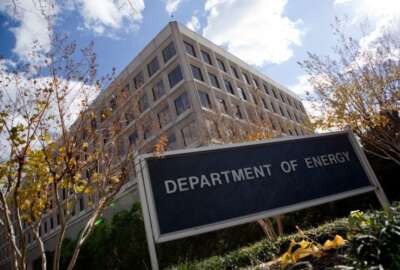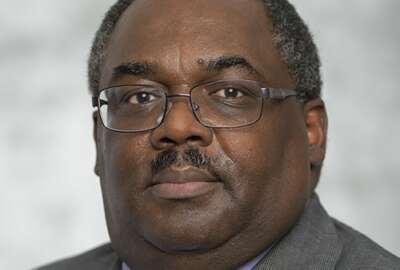
Energy, NNSA looking for new CIOs
Rocky Campione, the agency's chief information officer, is leaving in April -- while Wayne Jones, associate administrator for information management and CIO at the...
The Energy Department will be without two of its top technology executives over the next two months.
Rocky Campione, the department’s chief information officer, announced he plans on leaving on April 2 after almost 20 months on the job. He became CIO in July 2019 after spending the previous decade in the private sector.

Campione told staff in an email obtained by Federal News Network that he’s heading back to the private sector.
“Over the next few weeks, we will continue to work together to complete major modernization programs for Energy IT services (EITS), continue to keep our colleagues safe in their work environment, respond to cyber events across the complex and prepare to welcome my replacement,” Campione wrote in the email. “I am excited about what you will accomplish going forward and know the new leadership at DoE is working hard to find a new CIO. I am confident they will bring in a dynamic technology leader who will lead the Department’s drive towards innovation.”
Along with Campione, Wayne Jones, the associate administrator for information management and CIO at the National Nuclear Security Administration, retired effective Jan. 30.
Jones spent 30 years in government, including 12 years in the Navy and the last 18 in federal civilian sector since 2002.
“Wayne has provided phenomenal leadership and was an excellent public servant for the department and NNSA,” said Dr. Charles P. Verdon, acting under secretary for nuclear security and NNSA administrator, and deputy administrator for defense programs. “We are grateful for his commitment to NNSA’s critical national security mission and wish him well in his retirement.”
An Energy spokesman declined to comment on Campione’s departure.
It’s unclear who will replace Campione or Jones even on an interim basis. Emery Csulak is the principle deputy CIO and could be the acting CIO when Campione leaves.
During his tenure, Campione helped transform Energy’s technology infrastructure by standardizing on Microsoft Office 365 and using Amazon Web Services. He consolidated data centers by closing 47 in fiscal 2020, and started to implement robotics process automation, artificial intelligence and other emerging technologies.
“You responded to the SolarWinds cyber event in a coordinated and collaborative fashion that minimized the impact to the mission of the department,” Campione said in listing his office’s successes during his tenure. “You restructured contracts for cloud computing that allow our researchers to spend less on licenses and more on research. You instituted new processes to better understand how we fund cyber security in the department.”
Energy also was one of six agencies to take a loan from the Technology Modernization Fund. Campione restructured the project reducing Energy’s loan to $3 million from $15 million after the scope changed and the agency is moving fewer email boxes to the cloud that initially expected.
Energy’s progress with some aspects of IT modernization was limited. Under the Federal IT Acquisition Reform Act (FITARA) scorecard from December, Energy received a “C+” for the fourth straight grading period. The scorecard said Energy is struggling with managing the risk of major projects, conducting portfolio reviews and meeting the goals of the Federal Information Security Management Act (FISMA).
Energy has an IT budget of $2.8 billion in fiscal 2021, up from $2.6 billion in 2020 according to the Federal IT Dashboard. Energy said 83% of its projects are on schedule, but only 65% are on budget.
Campione rejoined Energy only in July as its principal deputy CIO after spending the last decade in the private sector with Planet Technologies, an IT security consulting firm.
At NNSA, Jones was the CIO since 2014. Among his accomplishments included leading the development of NNSA supply chain security program. He also slowly moved the agency into a hybrid cloud environment that featured voice-over-IP and virtual desktop interface (VDI) environment.

During the pandemic, Jones said NNSA’s classified network modernization initiative is divided into three distinct phases.
“We are currently in phase one, which establishes the architecture base for the network infrastructure upgrade. Phase one encompasses coordination among mission owners across NNSA program offices and the nuclear security enterprise to perform application rationalization for mission IT applications,” he wrote as part of a survey in the fall. “The pandemic made us rethink our approach to modernization, so we reprioritized some of our existing goals and objectives, which brought some items forward that were already on our list to begin with.”
He said that includes using an “as-a-service” approach for software productivity suites and enterprise offerings. He said these tools increase NNSA’s flexibility and allow them to provide the workforce with the flexibility needed to ensure their work can continue regardless of their location.
During his career, Jones also served as the chief technology officer for the Defense Department’s Missile Defense Agency, where he was responsible and accountable for developing and launching a strategic plan and related management execution plan; revitalizing technology infrastructure through improved information system policies and network strategies; establishing technology risk assessment and information system threat methodologies; guiding staff in daily operations; and advising the chief information officer on national security issues and organizational strategies.
Copyright © 2025 Federal News Network. All rights reserved. This website is not intended for users located within the European Economic Area.
Jason Miller is executive editor of Federal News Network and directs news coverage on the people, policy and programs of the federal government.
Follow @jmillerWFED






